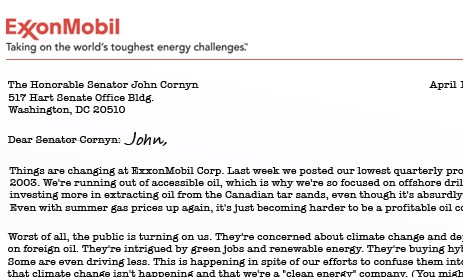This morning, the Senate took its final step on climate change before its summer vacation—a hearing pulled together by Senate Finance Committee Chairman Max Baucus from Montana on how carbon allowances are allocated under the Waxman-Markey bill. The main takeaway: Under the House bill, the middle class does the heavy lifting to pay for the cost of reducing greenhouse gas emissions.
The focus of the hearing was how the Senate can improve the allocation of the carbon allowances, which are likely to be worth more than $100 billion per year. Dallas Burtraw, a senior economist at Resources for the Future, testified on how Waxman-Markey will hit American’s pocketbooks. Through his research, Burtraw found that the bill does a pretty good job of protecting the poorest 20% and the richest 10% of Americans. But everyone in the middle ends up bearing the brunt of the costs.
To start, it should be noted that EPA has found that the cost of climate change legislation for the average household will be between $80–111 annually (PDF). So we’re not talking about a huge expense to begin with, despite the best efforts of some congressional Republicans to sow panic with bogus numbers. Plus, compared to the potentially catastrophic costs of global warming, the bill is a bargain no matter how it is cut up.
But that doesn’t mean there is no room for improvement. Waxman-Markey hits the middle class the hardest because it spends its consumer protection dollars unfairly. Under the current bill, roughly 56% of carbon allowances are designated for “consumer protection.” Of that, 15% will be auctioned off (with proceeds funneled to low-income households) and the balance given to local utilities. By allocating free permits to these local energy companies, policymakers hope that the value of the allowances will be “passed through” to consumers to compensate for energy price increases.
Problem number one: The language in the House bill is very loose about how this pass-through will work, leaving the door open for behind the scenes hanky-panky between local utilities and local regulators. In the best case scenario, this is just an clunky way to compensate consumers; in the worst case, local utilities could waste the money on inefficient projects that pad their wallets more than protect consumers.
But, even if the utilities do effectively pass through the value, over 70% will go to businesses rather than residential users. This means the one chunk of allowances that’s supposed to provide consumer protection will mostly end up helping industrial and commercial ratepayers, not middle-class families.
The result is an “inverted U” curve across income levels. On the left side at the lower incomes, the bill offers protection through the 15% auction and dividend. On the right hand side, the pass-throughs provide discounts for industrial and commercial users, increasing shareholder value that ultimately pays off for the top income bracket. But the folks in the middle, at the peak of the upside-down “U,” end up picking up the tab.
Burtraw has a simpler and more effective way to protect consumers. Using only the money currently designated for consumer protection, the Senate could keep 15% for a pass-through to residential ratepayers only, and use the rest for a direct refund to all American families. The results would be a more even distribution of costs and significant relief for the middle class. It also helps to smooth out regional differences that some midwestern representatives worry about.
Burtraw’s research finds that this change would lower the cost of the program for the average household by $106 per year, fully protect households below the poverty line, and give big relief to the middle class, with cost savings of between $177 and $263 for the middle income brackets.
It is admirable that a majority of the allowances in Waxman-Markey are earmarked for consumers; the problem is that the middle class sees so little of it. By switching around how those consumer protection dollars are spent, the Senate can flatten out the U and ensure the middle-class isn’t shouldering an unfair portion of the costs of fighting climate change.



